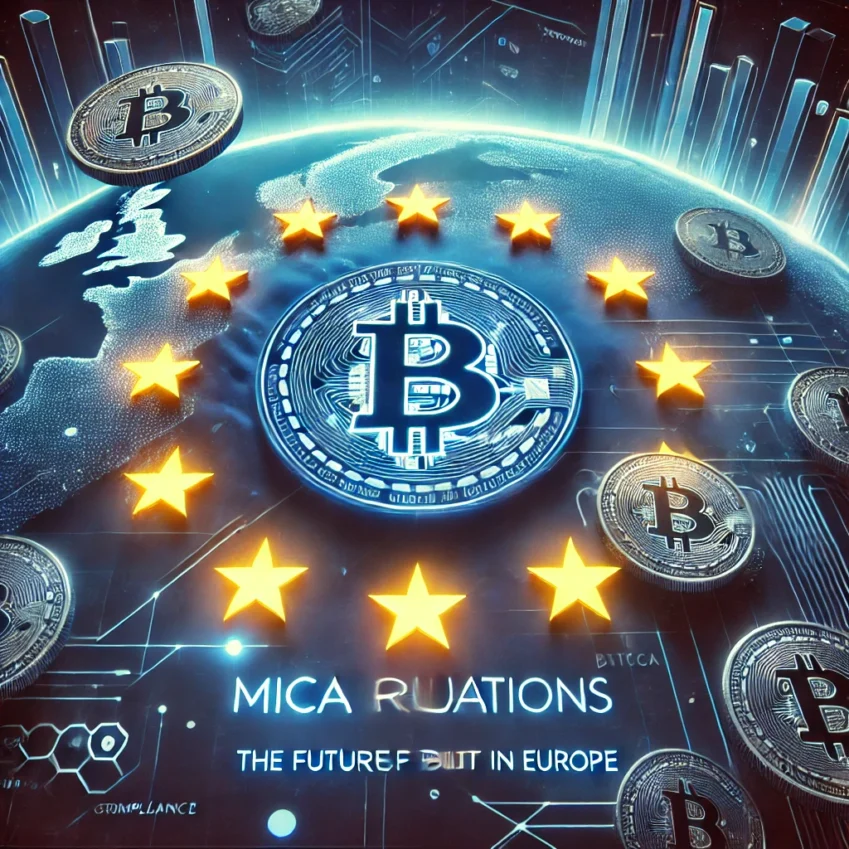The European Union’s Markets in Crypto-Assets (MiCA) regulation is a groundbreaking framework poised to transform the cryptocurrency landscape. By introducing clear rules, MiCA aims to regulate crypto-assets, ensuring consumer protection and fostering innovation. This post dives into what MiCA means for Bitcoin and its role in shaping the future of cryptocurrency in Europe.
1. What is MiCA?
MiCA stands for Markets in Crypto-Assets, a set of EU regulations designed to govern the cryptocurrency sector. This framework establishes consistent rules across all 27 member states, ensuring uniformity and reducing the regulatory patchwork that has previously hindered innovation. MiCA focuses on addressing risks associated with crypto-assets while promoting their potential for economic growth.
For Bitcoin, MiCA indirectly impacts its ecosystem by regulating the platforms and services that facilitate its trading and storage. These measures aim to create a safer environment for users and investors.
2. The Purpose of MiCA
The primary goal of MiCA is to build trust in cryptocurrency markets. By providing legal clarity, MiCA seeks to protect investors, mitigate financial crime, and ensure stability. Additionally, it strives to encourage innovation by giving businesses a clear regulatory framework to operate within.
For Bitcoin, this means more credibility as an investment asset. MiCA could be a catalyst for greater adoption as it brings transparency and confidence to the market, benefiting both retail and institutional players.
3. Bitcoin’s Role in MiCA
Although Bitcoin itself isn’t directly regulated under MiCA, the exchanges and custodial services supporting Bitcoin are subject to the framework. MiCA enforces strict operational guidelines, ensuring these services prioritize security and transparency.
By holding service providers to higher standards, MiCA indirectly enhances Bitcoin’s image as a reliable and secure asset. This regulatory oversight can attract new investors and expand Bitcoin’s reach within the European Union.
4. Legal Clarity for Businesses
MiCA eliminates ambiguity by providing a single regulatory framework for all crypto-asset activities across the EU. This consistency makes it easier for crypto businesses to innovate, expand, and scale without navigating conflicting national laws.
For Bitcoin-related businesses like wallets and exchanges, this clarity reduces compliance costs and opens the door for greater collaboration within the EU. Such an environment could position Europe as a global leader in cryptocurrency innovation.
5. Impact on Bitcoin Adoption
Regulation often boosts investor confidence, and MiCA is no exception. By legitimizing the cryptocurrency sector, MiCA could encourage more institutions to include Bitcoin in their portfolios. This trend would not only increase Bitcoin adoption but also enhance its status as a mainstream financial asset.
As Bitcoin becomes a more trusted option, retail users are likely to follow suit. This surge in adoption could lead to new opportunities for innovation and economic growth within the crypto ecosystem.
6. Consumer Protection Measures
MiCA introduces safeguards to protect crypto users from fraud, mismanagement, and operational risks. These include requirements for asset custody, transparency in trading, and secure wallet solutions, all of which benefit Bitcoin users directly.
By mandating high standards for service providers, MiCA ensures that Bitcoin investors enjoy a safer and more reliable trading experience. These measures could significantly reduce scams and fraudulent activities in the Bitcoin ecosystem.
7. Stablecoins and Bitcoin Transactions
Stablecoins, often used in Bitcoin trading, are a focal point of MiCA. The framework imposes strict regulations on their issuance and operation, ensuring they are backed by sufficient reserves and operate transparently.
While this could impact Bitcoin liquidity in the short term, it ultimately strengthens market stability. Regulated stablecoins create a safer environment for Bitcoin transactions, benefiting traders and investors alike.
8. Taxation and Reporting Requirements
MiCA’s emphasis on transparency extends to taxation and reporting. Crypto platforms must adhere to detailed reporting requirements, ensuring transactions are visible to tax authorities. This increased scrutiny may require Bitcoin users to maintain accurate records for compliance.
While this introduces challenges, it also brings legitimacy to Bitcoin. By aligning with regulatory norms, Bitcoin gains acceptance as a recognized asset in the traditional financial system.
9. Challenges for Bitcoin Miners
Although MiCA does not explicitly target Bitcoin mining, its focus on sustainability could indirectly influence mining operations. The EU’s broader push for green energy may encourage Bitcoin miners to adopt more environmentally friendly practices.
This shift could enhance Bitcoin’s reputation as a sustainable digital asset, attracting environmentally conscious investors and aligning it with global ESG (Environmental, Social, and Governance) trends.
10. The Road Ahead for Bitcoin
MiCA sets the stage for a more mature and stable cryptocurrency ecosystem. By providing a clear regulatory framework, it creates an environment where Bitcoin can thrive as a trusted and legitimate asset. This regulation also positions the EU as a global leader in crypto governance.
As MiCA takes effect, Bitcoin’s future in Europe looks promising. With enhanced trust and security, Bitcoin is poised to attract new users and investors, driving its adoption and cementing its role in the global financial system.
When Will MiCA Be Released in Europe?
The European Union’s Markets in Crypto-Assets (MiCA) regulation is set to be implemented in two phases:
1. Asset-Referenced Tokens and E-Money Tokens: Provisions for these tokens have been in effect since June 30, 2024.
2. Other Crypto-Assets and Service Providers: The broader regulations will apply from December 30, 2024.
This phased approach allows for a structured transition into the new regulatory environment, providing clarity and time for adaptation within the crypto industry.
Conclusion
MiCA is a pivotal development for the cryptocurrency industry, bringing regulation, clarity, and trust to the market. For Bitcoin, it signals the start of a new era—one marked by increased adoption, institutional interest, and mainstream legitimacy.
Want to stay updated on the latest developments in crypto? Follow us for more insights into Bitcoin and the evolving regulatory landscape.
